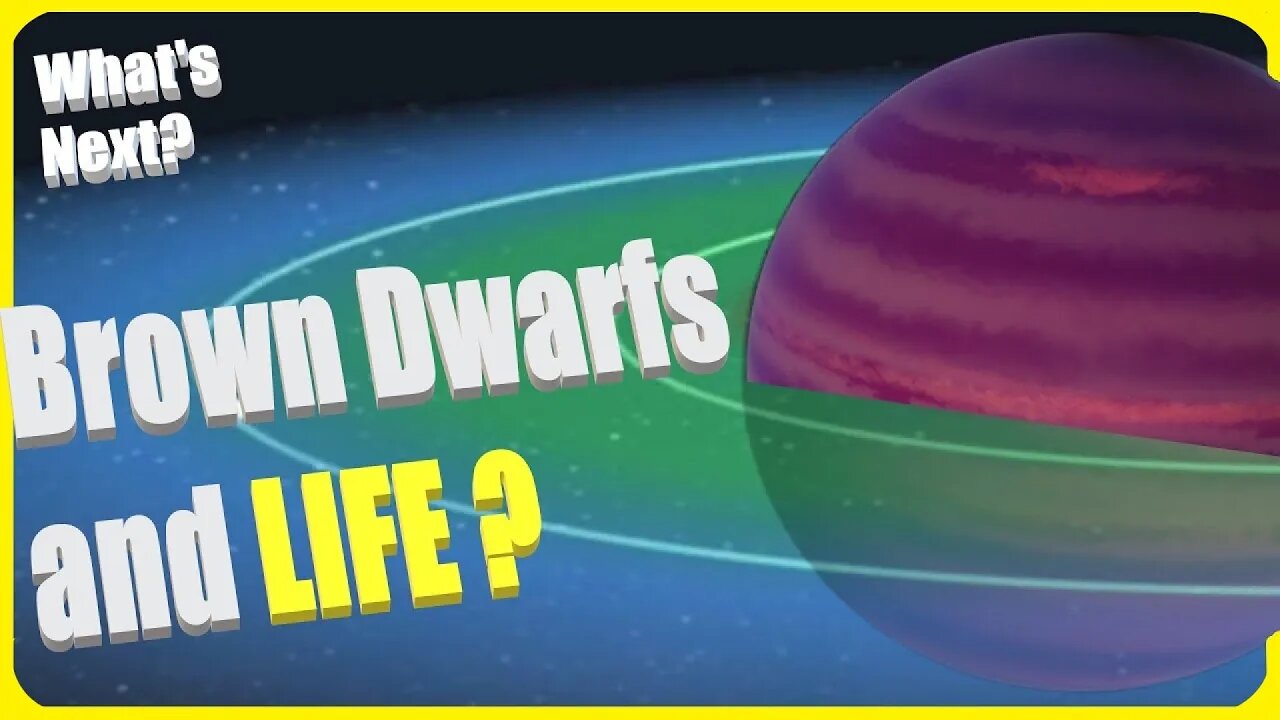Premium Only Content

Can BROWN DWARF Solar Systems Support Life?
WhatsNextVids on RUMBLE - https://rumble.com/user/WhatsNextVids
What's Next? on ODYSEE - https://odysee.com/@WhatsNext:5?view=content
Whats.Next on BITCHUTE - https://www.bitchute.com/channel/Yq06nyAcliTf/
Patreon - https://www.patreon.com/user?u=37594401
Buy Me A Coffee? - https://www.buymeacoffee.com/whats.next
Donate With Cash App - https://cash.app/$YTpayments
Get Mentioned In Future Videos By Joining PATREON For As Little As $5 A Month
(and gain access to DOZENS of videos!)
Support Direct Improvements To The Channel With BUY ME A COFFEE
Or Make Direct Contributions With No Strings Attached With CASH APP
WANT MORE GREAT CONTENT?
SUBSCRIBE TO THESE GREAT CHANNELS!
Vega Astro - https://www.youtube.com/channel/UCejLQCRfKR1XAmDeRRv3ifA
Terran Space Academy - https://www.youtube.com/channel/UCGzgxO2YKjk9yYKLwBjyeVA
Mars Matters - https://www.youtube.com/channel/UCPFLOxf5-AgE0QlaXhzol_Q
Brown Dwarf study - https://iopscience.iop.org/article/10.3847/1538-4357/ab5b13
Brown Dwarves Dwarf Brown dwarfs are substellar objects that are not massive enough to sustain nuclear fusion of ordinary hydrogen (1H) into helium in their cores, unlike a main-sequence star. Instead, they have a mass between the most massive gas giant planets and the least massive stars, approximately 13 to 80 times that of Jupiter (MJ). However, they can fuse deuterium (2H), and the most massive ones ( 65 MJ) can fuse lithium (7Li).
Astronomers classify self-luminous objects by spectral class, a distinction intimately tied to the surface temperature, and brown dwarfs occupy types M, L, T, and Y. As brown dwarfs do not undergo stable hydrogen fusion, they cool down over time, progressively passing through later spectral types as they age.
Despite their name, to the naked eye, brown dwarfs would appear in different colors depending on their temperature. The warmest ones are possibly orange or red, while cooler brown dwarfs would likely appear magenta to the human eye. Brown dwarfs may be fully convective, with no layers or chemical differentiation by depth.
Though their existence was initially theorized in the 1960s, it was not until the mid-1990s that the first unambiguous brown dwarfs were discovered. As brown dwarfs have relatively low surface temperatures, they are not very bright at visible wavelengths, emitting most of their light in the infrared. However, with the advent of more capable infrared detecting devices, thousands of brown dwarfs have been identified. The nearest-known brown dwarfs are located in the Luhman 16 system, a binary of L- and T-type brown dwarfs at about 6.5 light-years (2.0 parsecs). Luhman 16 is the third closest system to the Sun after Alpha Centauri and Barnard's Star.
Brown Dwarves Dwarf Brown dwarfs are substellar objects that are not massive enough to sustain nuclear fusion of ordinary hydrogen (1H) into helium in their cores, unlike a main-sequence star. Instead, they have a mass between the most massive gas giant planets and the least massive stars, approximately 13 to 80 times that of Jupiter (MJ). However, they can fuse deuterium (2H), and the most massive ones ( 65 MJ) can fuse lithium (7Li).
Astronomers classify self-luminous objects by spectral class, a distinction intimately tied to the surface temperature, and brown dwarfs occupy types M, L, T, and Y. As brown dwarfs do not undergo stable hydrogen fusion, they cool down over time, progressively passing through later spectral types as they age.
Despite their name, to the naked eye, brown dwarfs would appear in different colors depending on their temperature. The warmest ones are possibly orange or red, while cooler brown dwarfs would likely appear magenta to the human eye. Brown dwarfs may be fully convective, with no layers or chemical differentiation by depth.
Though their existence was initially theorized in the 1960s, it was not until the mid-1990s that the first unambiguous brown dwarfs were discovered. As brown dwarfs have relatively low surface temperatures, they are not very bright at visible wavelengths, emitting most of their light in the infrared. However, with the advent of more capable infrared detecting devices, thousands of brown dwarfs have been identified. The nearest-known brown dwarfs are located in the Luhman 16 system, a binary of L- and T-type brown dwarfs at about 6.5 light-years (2.0 parsecs). Luhman 16 is the third closest system to the Sun after Alpha Centauri and Barnard's Star.
Fun Fact: The correct plural form of dwarf in this case is dwarfs.
Dwarves is used in reference to the fantasy creatures 👍
-
 LIVE
LIVE
Lofi Girl
2 years agoSynthwave Radio 🌌 - beats to chill/game to
254 watching -
 44:08
44:08
The Why Files
6 days agoThe CIA, Men in Black and the Plot to Take Out JFK | The Maury Island Incident
46.5K65 -
 2:07:23
2:07:23
TimcastIRL
9 hours agoTrump SLAMS China With NEW 100% Tariff, Stocks & Crypto TUMBLE | Timcast IRL
291K152 -
 5:15:25
5:15:25
SpartakusLIVE
10 hours agoBF6 LAUNCH DAY || WZ and BF6 followed by PUBG - The PERFECT Combo?
61.4K3 -
 1:33:59
1:33:59
Glenn Greenwald
11 hours agoQ&A with Glenn: Is the Gaza Peace Deal Real? Why was the Nobel Peace Prize Given to Venezuela's Opposition Leader? And More... | SYSTEM UPDATE #529
117K67 -
 1:24:01
1:24:01
Flyover Conservatives
1 day agoURGENT FINANCIAL UPDATE! October 14–31: The Great and Terrible Day Has Arrived - Bo Polny; 5 Mindsets You Must Master - Clay Clark | FOC Show
55K5 -
 4:01:36
4:01:36
VapinGamers
8 hours ago $1.11 earnedBattlefield 6 - All Protatoe and Nothing but Net - !rumbot !music
38.7K1 -
 3:23:28
3:23:28
GritsGG
8 hours agoRANK GRIND! Most Wins in WORLD! 3734+!
33K -
 4:13:49
4:13:49
I_Came_With_Fire_Podcast
17 hours agoChina Owning the Mississippi? | Letitia James Indicted, But Don't Get Excited | Insurrection Inbound
37.8K10 -
 6:20:54
6:20:54
Eternal_Spartan
16 hours ago🟢 Eternal Spartan Plays Battlefield 6! | USMC Vet
24.5K2